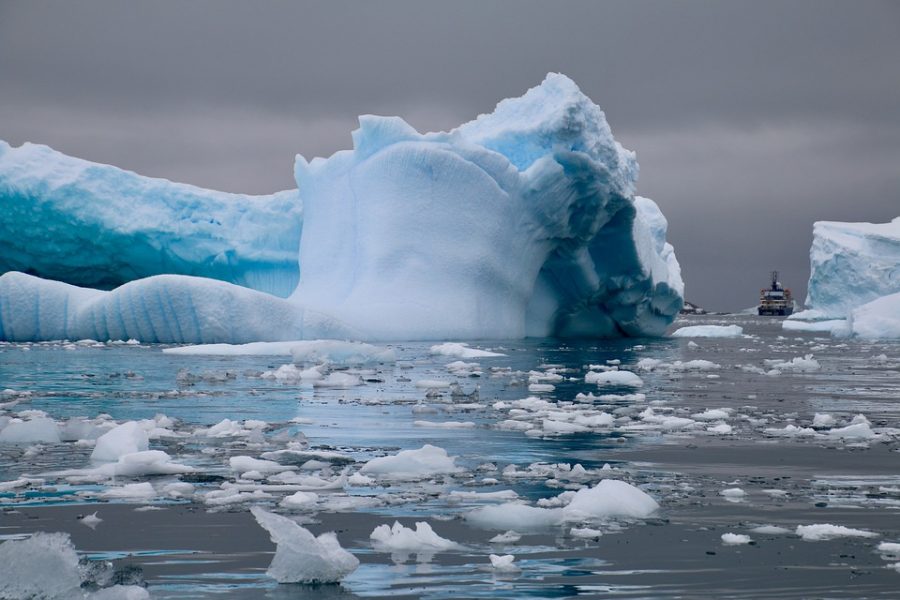NYU scientists discovered record warm water beneath the most vulnerable and most significant glaciers in the world last month, pointing to impending climate threats and drastically rising sea levels.
The group focused on the Thwaites Glacier — sometimes referred to as the Doomsday glacier due to its large size and rapid melting — located on the western edge of Antarctica. During a three-month expedition to Antarctica in collaboration with Pennsylvania State University, the Georgia Institute of Technology and the British Antarctic Survey, the team found new reasons for the glacier’s recession, which could lead to a one-meter increase in global sea levels.
David Holland, the director of NYU’s Environmental Fluid Dynamics Laboratory and NYU Abu Dhabi’s Center for Global Sea Level Change, said that this discovery was particularly significant due to the positioning of the glacier.
“Thwaites is the only [glacier] that has a massive gateway into the heart of Antarctica that all of [the ice] can come out,” Holland, who is also a math professor at NYU’s Courant Institute of Mathematical Sciences, said. “Other [glaciers] are blocked by mountains and bridges. They’re going to have trouble getting out quickly, which is a really good thing. With Thwaites, however, once the door is open, there’s nothing to stop it.”
The goal of the experiment was to research the point at which the glacier was positioned over the grounding line, or the Antarctic coastline.
“We were specifically at this area of the glacier that’s called the grounding line,” Aurora Basinski, a graduate student at the Courant Institute who assisted in the investigation, said. “So what that means is [that] the glacier rests on bedrock, and then at a certain point it goes afloat onto the ocean and so it’s no longer resting on the bedrock.”
Basinski added that the team concentrated on the grounding line because it is a particularly vulnerable spot.
“Models have shown that the melt rate, or the retreat, of an overall glacier is really sensitive to what’s happening right at the grounding line, because that’s kind of controlling how far inland the meeting between the ocean and the ice is occurring,” she said.
After enduring a three-day snowstorm and months of delays, the scientists drilled for 36 hours to create a large hole in a remote section of the glacier and lower down water-measuring instruments into the ocean below.
The water was found to be two degrees Celsius above the freezing point of that location. This warmer water could cause melting at the grounding line, unlocking a flood of land-based ice that would flow and melt into the ocean, Holland said.
As the Thwaites Glacier has been melting over the past decades, scientists thought water temperatures at this point may provide insight into its decline.
While the melting of ice that is already on top of water won’t increase sea levels, similarly to how the melting of ice in a glass of water won’t increase its volume, the introduction of new ice to the warm water under the Thwaites could be disastrous for coast-based populations around the world.
Holland said the researchers mainly studied grounded ice coming from inland and going into the ocean, which is distinct from floating ice that is already in the water.
“It’s kind of like if I have an ice cube in a glass of water, it’s floating … if it melts, there’s no change in the [water] level of the glass,“ he said. “But if I keep piling ice cubes into a glass of water, eventually ice cubes become grounded on the bottom of the glass.”
While more data needs to be collected on the source of this warmer water — which could take several years — scientists including Holland attribute it to man-made climate change. He suggested that these ocean current changes might be bringing in warm water from north of the Thwaites glacier to the grounding point.
“This is going to be a difficult problem to solve, and it’s going to need a lot of young people involved in science and technology and engineering and math over a long time to develop the instruments and the models,” Holland said.
Email Lachlan Hyatt at [email protected]























































































































































